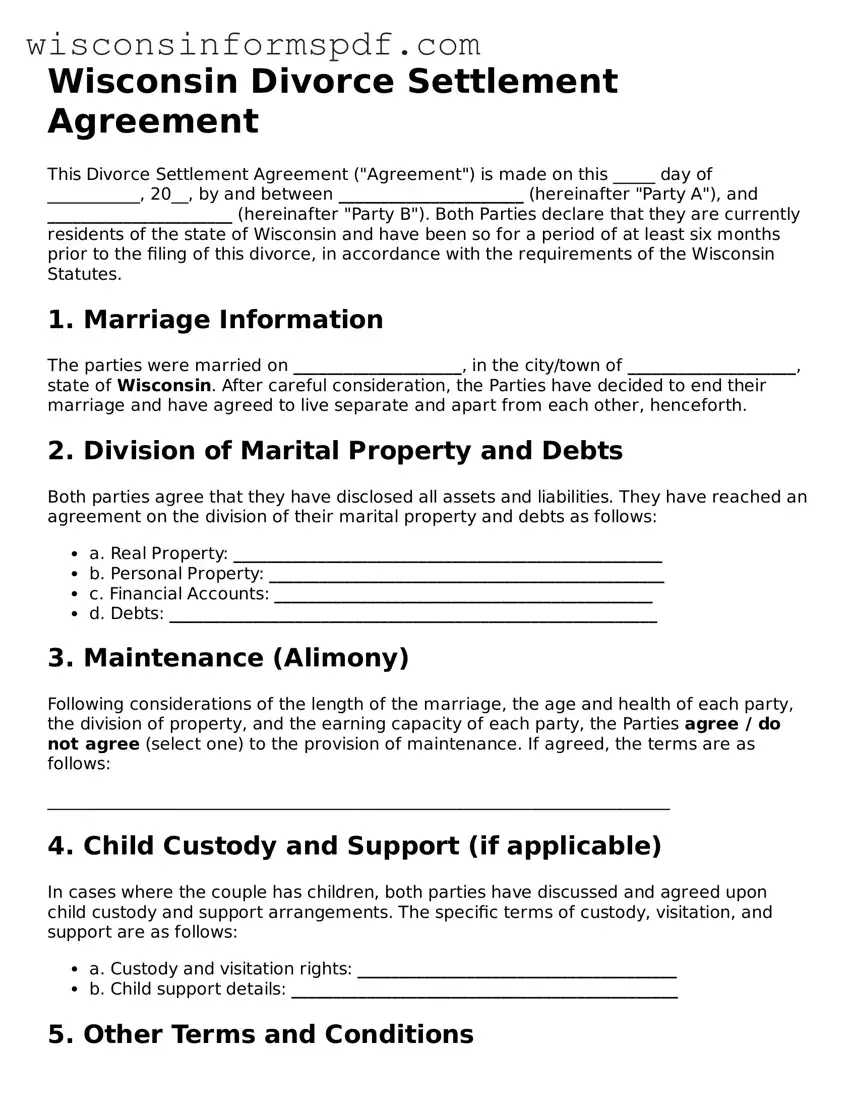What is a Wisconsin Divorce Settlement Agreement?
A Wisconsin Divorce Settlement Agreement is a legal document where both parties in a divorce outline the division of their assets, property, debts, and any other financial obligations. It also covers matters related to child custody, support, and alimony, if applicable. This agreement is submitted to and must be approved by the court to become effective.
Do both parties need to agree to the Divorce Settlement Agreement?
Yes, both parties must mutually agree on the terms outlined in the Divorce Settlement Agreement. Once both parties have reached an agreement, they sign the document, making it legally binding, pending court approval.
What happens if we can't agree on the Divorce Settlement Agreement?
If both parties cannot agree on the terms of the Divorce Settlement Agreement, they may need to attend mediation. If mediation doesn't result in an agreement, the case could go to trial, and a judge will make the final decisions regarding the division of assets, custody, and other matters.
Can the Divorce Settlement Agreement be changed after it's finalized?
Yes, the Divorce Settlement Agreement can be modified after it is finalized, but both parties must agree to the changes, or a significant change in circumstances must be proven to the court for a modification to be considered. Requests for modifications are commonly related to child support, custody, or alimony.
What should be included in a Wisconsin Divorce Settlement Agreement?
A comprehensive Divorce Settlement Agreement in Wisconsin should include the division of all marital property and debts, alimony arrangements, child support details, custody arrangements, and any other relevant financial obligations or agreements between the parties.
Is a lawyer required to create a Wisconsin Divorce Settlement Agreement?
While it's not legally required to have a lawyer to create a Divorce Settlement Agreement in Wisconsin, it's highly recommended. A lawyer can ensure that the agreement is fair, properly drafted, and compliant with Wisconsin law. They can also foresee and address potential legal issues.
How is property divided in a Wisconsin Divorce Settlement Agreement?
In Wisconsin, which is a community property state, all marital property is divided equally between the parties, unless agreed otherwise in the Divorce Settlement Agreement. Marital property includes all assets and debts acquired during the marriage, regardless of whose name is on the title.
What if one spouse doesn't follow the Divorce Settlement Agreement?
If one spouse fails to follow the terms of the Divorce Settlement Agreement, the other party can file a motion with the court to enforce the agreement. The court may then take various actions, including ordering compliance, garnishing wages, or imposing other penalties to ensure the agreement is honored.
